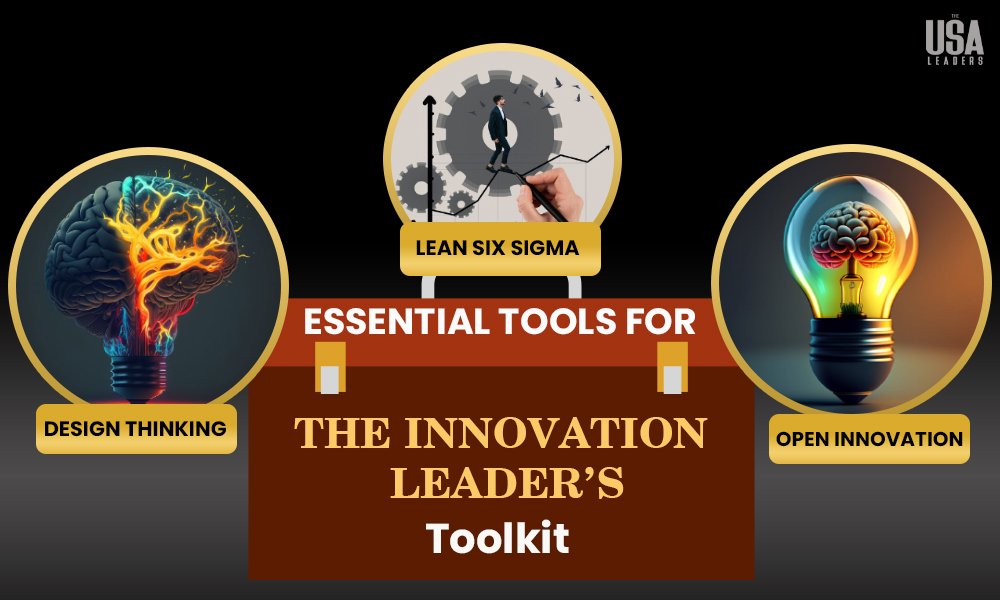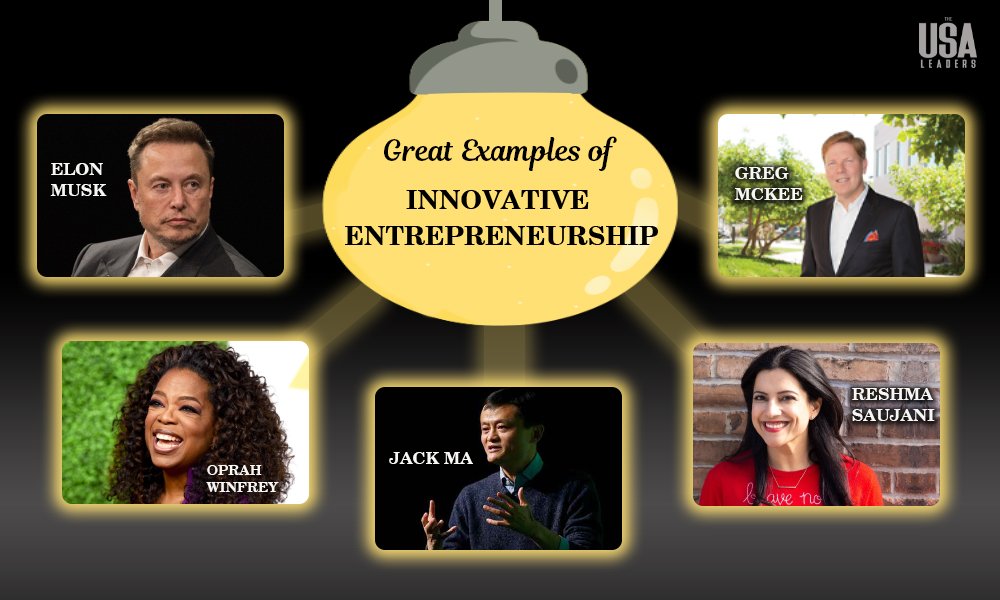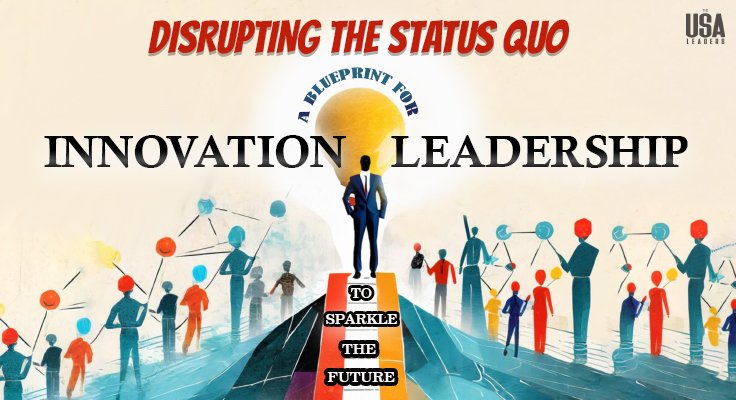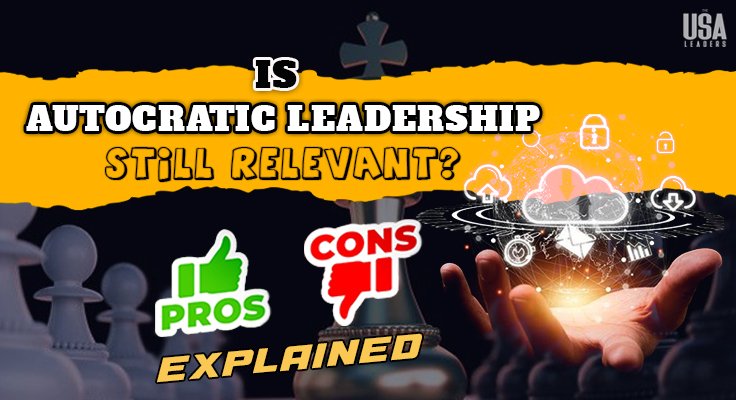An entrepreneur is considered to be an innovative individual. But do you know that innovation leadership is the fuel that propels us forward?
Innovations are always challenging and come with potential risks. It is the leader who holds the responsibility to make the change happen. And, for that, a leader needs to be innovative enough to cross the hurdles to achieve great milestones.
In response to upgrading technology, demand for innovation leadership is heating up. So, the question arises, how do I reach the helmsman seat?
In this blog, you will learn the following points:
- What is Innovation Leadership?
- Core Principles
- Challenges
- Key Skills and Strategies
- Implementing Innovation Strategies
- Step-by-Step Action Plan
- Conclusion
What is Innovation Leadership?
Innovation leadership is the guiding force that empowers individuals and organizations to thrive in today’s ever-changing world. Moreover, it’s about fostering a culture of creativity, embracing new ideas, and transforming challenges into opportunities. However, by harnessing the power of innovation leadership, individuals can unlock exciting career prospects and boost their problem-solving skills. Similarly, organizations, on the other hand, can gain a competitive edge, increase adaptability, and stay ahead of the curve. Therefore, it’s evident that innovation leadership plays a pivotal role in driving success and growth.
Innovation leadership goes beyond simply coming up with new ideas. It is about creating an environment where innovative thinking flourishes, and where ideas are nurtured and transformed into reality.
Core Principles: Building the Foundation for Innovation
At the heart of innovation leadership lie core principles that create an environment conducive to progress. These include:
- Promoting Creativity: Cultivating an environment that encourages employees to think outside the box, challenge assumptions, and explore unconventional solutions. This can involve providing opportunities for brainstorming sessions, encouraging experimentation, and rewarding creative thinking.
- Encouraging Risk-Taking: Embracing calculated risks and understanding that failures are inevitable stepping stones on the path to innovation. Moreover, this requires fostering a culture of psychological safety where individuals feel comfortable taking risks without fear of punishment for mistakes. Therefore, leaders can role-model risk-taking behavior and celebrate successes alongside learning opportunities from failures.
- Fostering Collaboration: Building diverse teams where individuals from different backgrounds, disciplines, and experiences can come together, share ideas, collaborate effectively, and learn from each other. Moreover, this can involve creating cross-functional teams, encouraging open communication, and fostering a sense of shared ownership and accountability for innovation initiatives.
- Open Communication: Maintaining transparent communication channels to ensure everyone is informed, engaged, and aligned with the vision. This involves fostering open dialogue, actively listening to different perspectives, and providing regular updates on the progress of innovation efforts.
Innovation Leadership: Embracing the Journey, Not Just the Destination
The journey towards innovation leadership is not without its challenges. Leaders often face:
- Resistance to Change: Navigating resistance from employees, stakeholders, or even within themselves who may be hesitant to embrace new ways of working. However, this resistance can stem from a fear of the unknown, a lack of understanding of the benefits of change, or a sense of comfort with the status quo. Therefore, to overcome this challenge, leaders need to effectively communicate the vision for change, address concerns transparently, and provide support and resources to help individuals transition smoothly.
- Managing Failures: Reframing failures as learning opportunities and fostering a culture where experimentation and calculated risks are encouraged with the understanding that not all ideas will succeed are essential skills of innovative leaders. This is crucial because the fear of failure can stifle creativity and innovation. Leaders can create a safe space for learning from mistakes by encouraging open communication about failures, celebrating successes alongside setbacks, and focusing on continuous improvement rather than blame.
- Resource Constraints: Optimizing limited resources to support innovative initiatives without compromising on quality or efficiency. This challenge requires creative problem-solving and strategic resource allocation. Leaders can leverage tools like lean Six Sigma to identify and eliminate waste in existing processes, explore alternative funding sources such as grants or partnerships, and prioritize innovation initiatives based on their potential impact and feasibility.
Equipping Yourself for Innovation: Essential Skills and Strategies
To become an effective innovation leader, certain key skills are essential:
- Communication: Clearly articulating the vision, inspiring and motivating others to buy in, and ensuring open and transparent communication channels are established. Moreover, effective communication involves actively listening to understand different perspectives, tailoring messages to different audiences, and providing constructive feedback.
- Critical Thinking and Problem-Solving: Identifying opportunities for innovation by approaching challenges from various angles, analyzing information critically, and developing creative solutions that address the root cause of problems. This skill also involves the ability to think strategically, anticipate potential challenges, and develop contingency plans.
- Building and Leading Teams: Creating a diverse and inclusive team environment where individuals feel valued, empowered, and psychologically safe to contribute their unique skills, perspectives, and experiences. This involves fostering collaboration, building trust and rapport within the team, and delegating tasks effectively while providing support and guidance.
Essential Tools for the Innovation Leader’s Toolkit

Several frameworks and approaches can equip innovation leaders with the tools they need to drive positive change:
- Design Thinking: This human-centered approach places empathy at the core of the problem-solving process. By understanding the needs and desires of users, innovation leaders using design thinking can develop solutions that are not only innovative but also truly impactful.
- Lean Six Sigma: This methodology focuses on improving efficiency and eliminating waste in existing processes. By applying Lean Six Sigma principles, innovation leaders can free up resources and create space for new ideas to flourish.
- Open Innovation: Collaboration is key to innovation leadership. Open innovation involves tapping into the expertise and perspectives of external partners, such as startups, universities, and research institutions. This allows organizations to access a wider range of ideas and accelerate the innovation process.
Turning Ideas into Action: Implementing Innovation
Innovation leadership isn’t just about brainstorming; it’s about taking action. Here are some concrete steps to transform innovative ideas into reality:
- Building a Strong Team: Assemble a diverse team with complementary skills and perspectives. This diversity fosters creative problem-solving and ensures that different viewpoints are considered.
- Securing Resources: Allocate appropriate budget and resources to support the implementation of innovative initiatives. Remember, innovation leadership requires investment, not just inspiration.
- Setting Goals and Metrics: Define clear and measurable goals to track the progress and success of your innovation efforts. This helps ensure that your team is working towards a shared vision and allows you to measure the impact of your initiatives.
- Embracing Experimentation and Learning: Encourage a culture of experimentation and learning from both successes and failures. This fosters a safe space for individuals to take risks, try new things, and learn from mistakes.
Becoming an Innovation Leader: Your Step-by-Step Action Plan
The good news is that anyone can develop their innovative leadership skills. Here’s a step-by-step plan to get you started:
- Step 1 Self-Reflection: Take a deep dive into your strengths and weaknesses. Are you naturally creative? Do you enjoy taking calculated risks? How comfortable are you collaborating with others? Identifying your areas for improvement is the first step towards growth.
- Step 2 Continuous Learning: Never stop feeding your curiosity! Actively seek out new knowledge and skills through online courses, workshops, or even by simply reading books and articles on innovation leadership style and related topics. Additionally, staying up-to-date on industry trends and the latest advancements in innovative thinking is crucial for innovation leaders.
- Step 3 Building Your Network: Surround yourself with inspiring individuals! Connect with other innovative leaders and individuals in your field or industry. Also, attend conferences and events, join online communities, or reach out to individuals you admire. By building a strong network, you can learn from others’ experiences, gain new perspectives, and stay motivated on your own innovation leadership journey.
- Step 4 Practicing and Experimenting: Don’t wait for the perfect opportunity to innovate. Start small! Apply your knowledge and actively seek opportunities to be innovative within your current role, even if it means suggesting a new approach to a routine task or volunteering to lead a brainstorming session on a specific challenge.
Remember, it is a journey, not a destination. The more you practice and experiment, the more comfortable and confident you will become in leading innovation efforts.
Great Examples of Innovative Entrepreneurship

- Elon Musk: He co-founded PayPal, Tesla, SpaceX, and Neuralink. Moreover, his ventures have revolutionized electric vehicles, and space exploration, and are pushing the boundaries in artificial intelligence.
- Oprah Winfrey: She built a media empire through her exceptional talk show, production company, and philanthropic endeavors. Similarly, she is known for her innovative approach to storytelling and empowering others.
- Jack Ma: He founded Alibaba, a giant in e-commerce, revolutionizing online retail in China and impacting global markets. In addition, his innovative approach to online payments and logistics has significantly changed the e-commerce landscape.
- Reshma Saujani: Founder of Girls Who Code, she championed the crucial role of women in technology. Furthermore, her innovative approach to closing the gender gap in tech has inspired countless girls and young women to pursue careers in STEM fields.
- Greg McKee: CEO of Tryp Therapeutics, is leading the way in medical advancements by focusing on psilocybin-based treatments for various conditions. Therefore, his innovative approach to utilizing psychedelics for therapeutic purposes holds the potential to revolutionize mental health treatment.
Embrace the Future with Innovation Leadership
Innovation leadership is not just a buzzword; it’s a strategic approach to navigating the uncertainties of the future and unlocking new possibilities. By embracing the core principles, overcoming challenges, equipping yourself with the right skills, and taking actionable steps, you can become an innovation leader and pave the way for a brighter future, both for yourself and for your organization.
Remember, the journey of innovation leadership is continuous. Therefore, embrace the learning process, celebrate successes, learn from failures, and keep pushing the boundaries to drive positive change and achieve remarkable results.
Keep Reading! Keep Growing!





















